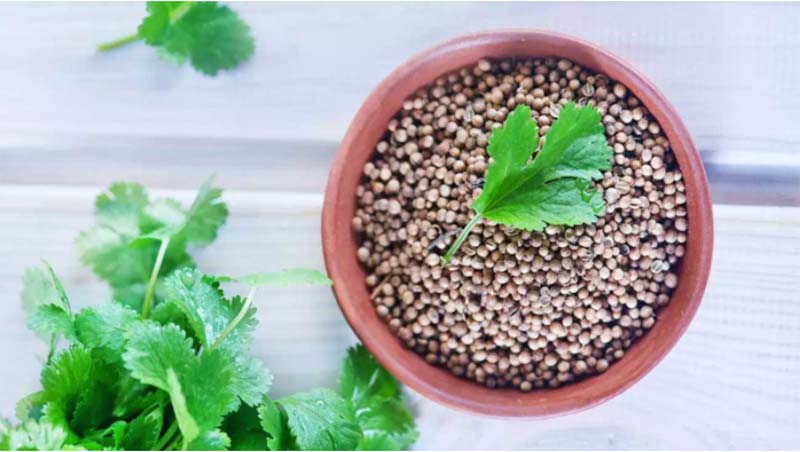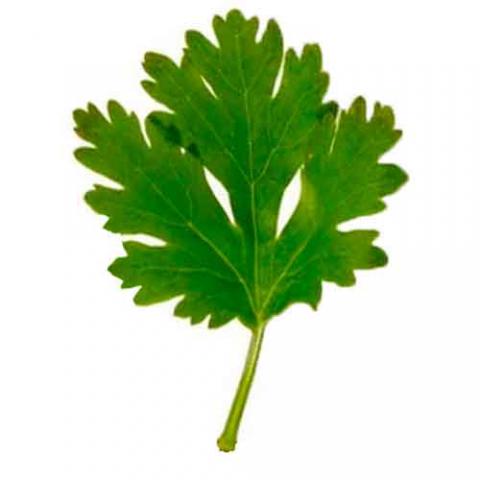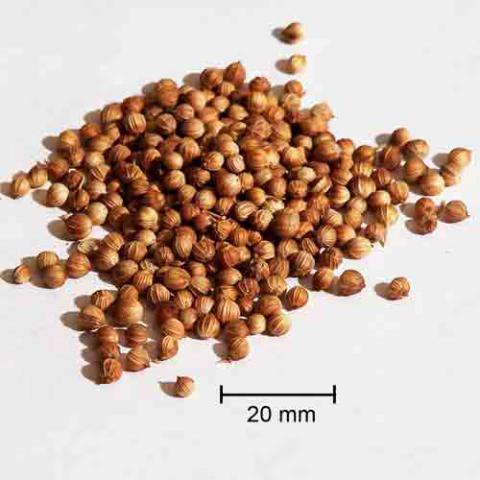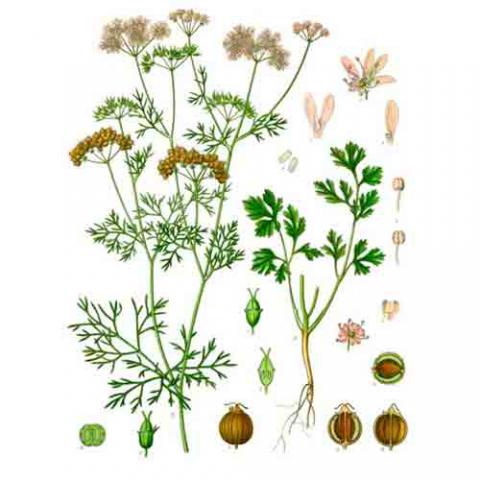NAME(S)
TAXONOMY
PLANTAE ID
THERAPEUTIC
Israel
Issued:
Stamp:
Coriandrum sativum
Mauritius
Issued:
Stamp:
Coriandrum sativum
Israel
Issued:
Stamp:
Coriandrum sativum
Mauritius
Issued:
Stamp:
Coriandrum sativum
Israel
Issued:
Stamp:
Coriandrum sativum
Mauritius
Issued:
Stamp:
Coriandrum sativum
Cilantro vs Coriander: What's the Difference? (excerpts)

Cilantro and coriander come from the plant species — Coriandrum sativum.
However, they are named differently in different parts of the world.
In North America, cilantro refers to the leaves and stalks of the plant. The word “cilantro” is the Spanish name for coriander leaves. Meanwhile, the dried seeds of the plant are called coriander.
Internationally, it’s a different story. Coriander is the name for the leaves and stalks of the plant, while the dried seeds are called coriander seeds.
To avoid confusion, the rest of this article refers to the leaves and stalks of the Coriandrum sativum plant as cilantro and the dried seeds as coriander.
Despite coming from the same plant, cilantro and coriander have significantly different nutrient profiles, tastes and uses.
They Have Different Nutrient Profiles
Summary: Though they come from the same plant, cilantro and coriander have different nutrient profiles. Cilantro has higher levels of vitamins, such as vitamins A, K and E, while coriander is more abundant in minerals like manganese, iron, magnesium and calcium.
They Taste and Smell Different
Summary: Cilantro has a fragrant, refreshing and citrusy taste and aroma, while coriander has a warmer, spicy and nutty taste and aroma. Interestingly, some people may have a specific genetic trait that makes them perceive cilantro differently.
They Have Different Uses in Cooking
Cilantro Dishes
Here are some dishes that contain cilantro:
- Salsa: A Mexican side dish
- Guacamole: An avocado-based dip
- Chutney: A sauce of Indian origin
- Acorda: A Portuguese bread soup
- Soups: Some may call for cilantro as a garnish to enhance their flavor
Coriander Dishes
Here are some dishes that contain coriander:
- Curries
- Rice dishes
- Soups and stews
- Meat rubs
- Pickled vegetables
- Borodinsky bread: A sourdough rye bread of Russian origin
- Dhana dal: Roasted and crushed coriander seeds, a popular Indian snack
Summary: Cilantro has a more refreshing and citrusy taste, which is why it’s commonly used as a garnish in many recipes. In contrast, coriander has a more warm and spicy taste, which is why it’s more commonly used in curries, rice dishes, soups and meat rubs.
Possible Health Benefits of Cilantro and Coriander
Summary: Both cilantro and coriander may deliver impressive health benefits. They may help reduce inflammation and blood sugar levels, lower the risk of heart disease and fight infections. However, more research on their effects in humans is needed.Both cilantro and coriander may deliver impressive health benefits. They may help reduce inflammation and blood sugar levels, lower the risk of heart disease and fight infections. However, more research on their effects in humans is needed.
Genus species (Plantae): Coriandrum sativum
Coriander is native to regions spanning from southern Europe and northern Africa to southwestern Asia. It is a soft plant growing to 50 cm (20 in) tall. The leaves are variable in shape, broadly lobed at the base of the plant, and slender and feathery higher on the flowering stems. The flowers are borne in small umbels, white or very pale pink, asymmetrical, with the petals pointing away from the center of the umbel longer (5–6 mm or 0.20–0.24 in) than those pointing toward it (only 1–3 mm or 0.039–0.118 in long). The fruit is a globular, dry schizocarp 3–5 mm (0.12–0.20 in) in diameter.
Etymology
First attested in English in the late 14th century, the word "coriander" derives from the Old French: coriandre, which comes from Latin: coriandrum, in turn from Ancient Greek: κορίαννον koriannon. The earliest attested form of the word is the Mycenaean Greek ko-ri-ja-da-na written in Linear B syllabic script (reconstructed as koriadnon, similar to the name of Minos's daughter Ariadne) which later evolved to koriannon or koriandron.
Cilantro is the Spanish word for coriander, also deriving from coriandrum. It is the common term in North American English for coriander leaves, due to their extensive use in Mexican cuisine.
References: Wikipedia, Annie's Remedies, Plants.usda.gov, White Rabbit Institute of Healing







